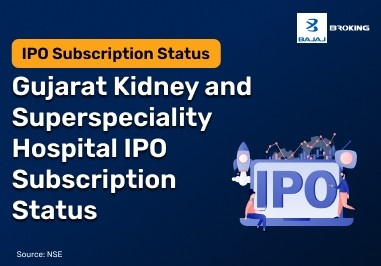IPOs are always the subject of some sort of hype. It might be thrilling to consider purchasing stock in a business that is just entering the public market. It's similar to receiving an invitation to embark on a journey from the beginning, with the potential for substantial returns should the firm succeed in the long run.
The fact is that initial public offerings (IPOs) are not always successful. After going public, the value of some businesses rises, while that of others rapidly declines. You must thus examine them cautiously and with curiosity. To determine whether an IPO is truly worth investing in, you need to take a methodical approach rather than getting sucked into the hoopla.
What is an IPO
When a private firm chooses to sell its shares to the public for the first time, it's known as an IPO, or initial public offering. These shares were formerly owned exclusively by the founders, promoters, or private investors. Going public makes it possible for regular investors like you to participate.
One of three primary factors typically influences a company's decision to go through with an IPO:
An IPO may present you as an investor with the chance to take part in the company's expansion. But keep in mind that risk always accompanies opportunity. Therefore, it makes sense to research the IPO before applying.
Step-by-Step Process to Analyse an IPO
Step 1: Assess the IPO prospectus.
The finest source of information is the IPO prospectus. This document, which is submitted to authorities, details the company's plans for using the money it is raising as well as the dangers it faces.
Although you don't have to read every page, you should focus on:
Use of Proceeds: Is the business using the funds for new initiatives, research, or expansion? That's encouraging. However, it might not help future growth if the majority of it is only used to pay off debt or let early investors cash out.
Risk Factors: This section lists potential problems. For instance, a business is more at risk if it relies too much on a single client or product.
Evaluation: Examine the IPO price in relation to other businesses in the same sector. The IPO may have trouble after listing if it appears expensive.
Ownership Structure: Discover the major investors. Ask yourself why promoters or institutional investors are divesting large amounts; they could be uncertain about the company's future.
Step 2: Examine financial indicators
Numbers never lie. You can understand how strong a business is by looking at the financials. Pay attention to:
Revenue Growth: Does the company consistently increase revenues year-over-year? That often shows a good company plan.
Profit Margins: Companies with larger margins often have pricing power or good cost control.
Earnings Per Share (EPS): Higher EPS means greater profit per share for owners. Decreased EPS could be a warning sign.
Debt Levels: A business that has too much debt may suffer, particularly in erratic markets. The ratio of debt to equity will provide you with a clear picture.
Step 3: Evaluate the state of the market
The state of the market at the time of the IPO will have a bearing on the firm's performance even if they are performing well.
Market Sentiment: By and large, IPOs perform best when investors are optimistic. Even mature companies can struggle to perform in volatile markets.
Trends in the Sector: Look at the sector in which the firm operates. Is it in a declining sector such as traditional retail or a developing sector such as renewable energy?
Timing: Firms sometimes initiate IPOs at a high point in the market to get better pricing. As an investor, consider whether the timing is in your favour before acting too quickly just because the IPO is much anticipated.
Step 4: Assess Positioning in the Competitive Landscape
A firm's potential is limited by both the performance metrics it generates and its position compared to its competitors.
Competitive Advantages: Does the firm have a unique asset such as an iconic brand, a unique product, or patented products?
Market Share: A consistent increase in the company's market share is typically an indication of strength.
Barriers to Entry: A company's position is safer the more difficult it is for new competitors to enter the market.
Step 5: Evaluate Demand from Investors
An IPO's short-term performance can be greatly impacted by the degree of demand for it.
Roadshow feedback: Businesses display to big institutional investors before they go public. If there is a strong interest in the business, the feedback is mostly positive.
Subscription levels: If there is an oversubscription, this indicates that a large number of investors think it is a promising business. If the subscriptions are low, the opposite may occur.
Overall sentiment: Monitor the coverage of the IPO in the news and the discussions and chatter about it. This will help you get a handle on the market.
Key Considerations While Evaluating an IPO
Examining the Leadership Group
A company's future can be shaped by its leadership. Examine the experience and performance history of the company's managers. Companies with strong executives typically overcome obstacles more successfully.
Verifying the Distribution of IPO Funds
Where is the money going? It should ideally be applied to debt reduction, research, or expansion. It's concerning if it's mostly to offset daily losses.
Monitoring Subscription Levels
Interest from institutional investors is particularly instructive. Heavy subscriptions from major players typically indicate trust in the business.
Assessing the Dividend Strategy and IPO Pricing
Is the IPO price reasonable relative to its competitors? Once stock trading begins, overpricing commonly leads to corrections. Look at the company's dividend policy, too - a dividend payout, if timely, might be a sure form of income, over time.
Choosing a Trustworthy Brokerage Firm
Who your broker is matters. A reliable brokerage will offer a dependable platform, clear fees, and useful research tools to assess IPO share offerings.
Analysing Institutional Investor Demand
Most large investors, such as banks and mutual funds, usually lead. Institutional ownership provides confidence and may affect the IPO performance post-listing.
Utilising Cutting Edge Technology
Current trading platforms offer up-to-date notifications and information. A significant factor for IPOs is being up to date and acting quickly - which can be done as using those options.
Wrapping Up
IPO investing isn't about chasing trends or the latest trends. It all comes down to carefully examining the company's foundations and posing pertinent questions.
You must examine the financials, comprehend the state of the market, assess the leadership group, and determine the intended use of the IPO funds. It is equally crucial to consider investor pricing and demand.
Not all first public offerings (IPOs) are successful. However, you will be in a much better position to minimise dangers and make informed decisions if you carefully consider each option.














